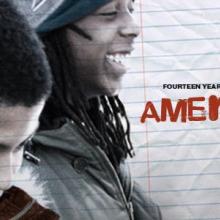systemic inequality
TO LOOK AT HIM, you know he’s lived a hard life. With ridges creasing his 27-year-old face, my cousin Shack looked me in the eye during a family gathering and helped me understand how hopeless he feels. The people in his Newark, N.J. neighborhood are being pushed out of their community. The Whole Foods and condos that are moving in are raising the costs of rent and food. The neighborhood’s old guard can’t keep up. This is the case in almost every city across the country. In my own neighborhood—Petworth in Washington, D.C.—I have watched condos rise around me and Starbucks and small bistros move in over the last six years. When I moved here in 2011, taxi drivers and community veterans told me that, until recently, they considered Petworth one of the most dangerous and impoverished neighborhoods in D.C. Gutted by the violent uprising in response to the assassination of Martin Luther King Jr. in 1968, the adjacent neighborhood Columbia Heights lay abandoned by city services and industry, and given over to poverty and violence, for more than three decades. When the city decided to develop Columbia Heights, it was only a matter of time before they would do the same to Petworth. “But gentrification is not the problem,” Shack said. “Poverty is the problem.” I heard those words and I wanted to push back. The anti-poverty advocate in me wanted to say, “Get with the program, cuz. Gentrification is the devil.” But Shack had a point, a good one. Obviously, repair and development of the neighborhood isn’t the problem—it’s the displacement of often-poorer people by more affluent people that usually goes with it. These neighborhoods should have been repaired and developed decades ago according to the desires of their homeowners and residents.
"I bet if I were white then I'd be better off … Isn’t that true?” - Idris
A 9-year-old African-American boy lay on the couch, rubbing his head, and told his dad that if he just went to another school, life would be better. If he were just white, life would be better. He clarified, “I’m not saying I want to … but isn’t that right? That’s what everyone else is saying.”
When a 9-year-old boy can see the sad reality of white privilege and understand that the color of your skin is what defines you in our society, we have a serious problem. We can talk about the progress we have made to move civil rights forward over the past 50 years, and many in my generation are grateful for this movement, but we have a long, long way to go.
According to the Black Boys Report, the high school graduation rate for black males is at 52 percent, while white students graduate at a rate of 78 percent. As a nation, we are proud of our success and power, yet our education statistics do not predict the kind of achievement that we expect for the future of our society. In the midst of a major demographics shift, our nation can no longer afford to accept the growing education gap that has become normative in recent years.
American Promise is a documentary following the lives of two African-American boys from kindergarten through high school. The boys attend Dalton, a private school in the upper east side of Manhattan. As Idris and Seun make their way through years of schooling, the film chronicles the truths of our education system and the lack of social and emotional support offered to students of color in America’s schools. The filmmakers, Michèle Stephenson and Joe Brewster, are the parents of Idris. Through their son’s journey, the hardships of being an African-American boy growing up in today’s society are documented, and struggles of parenting are examined through an entirely new lens.

